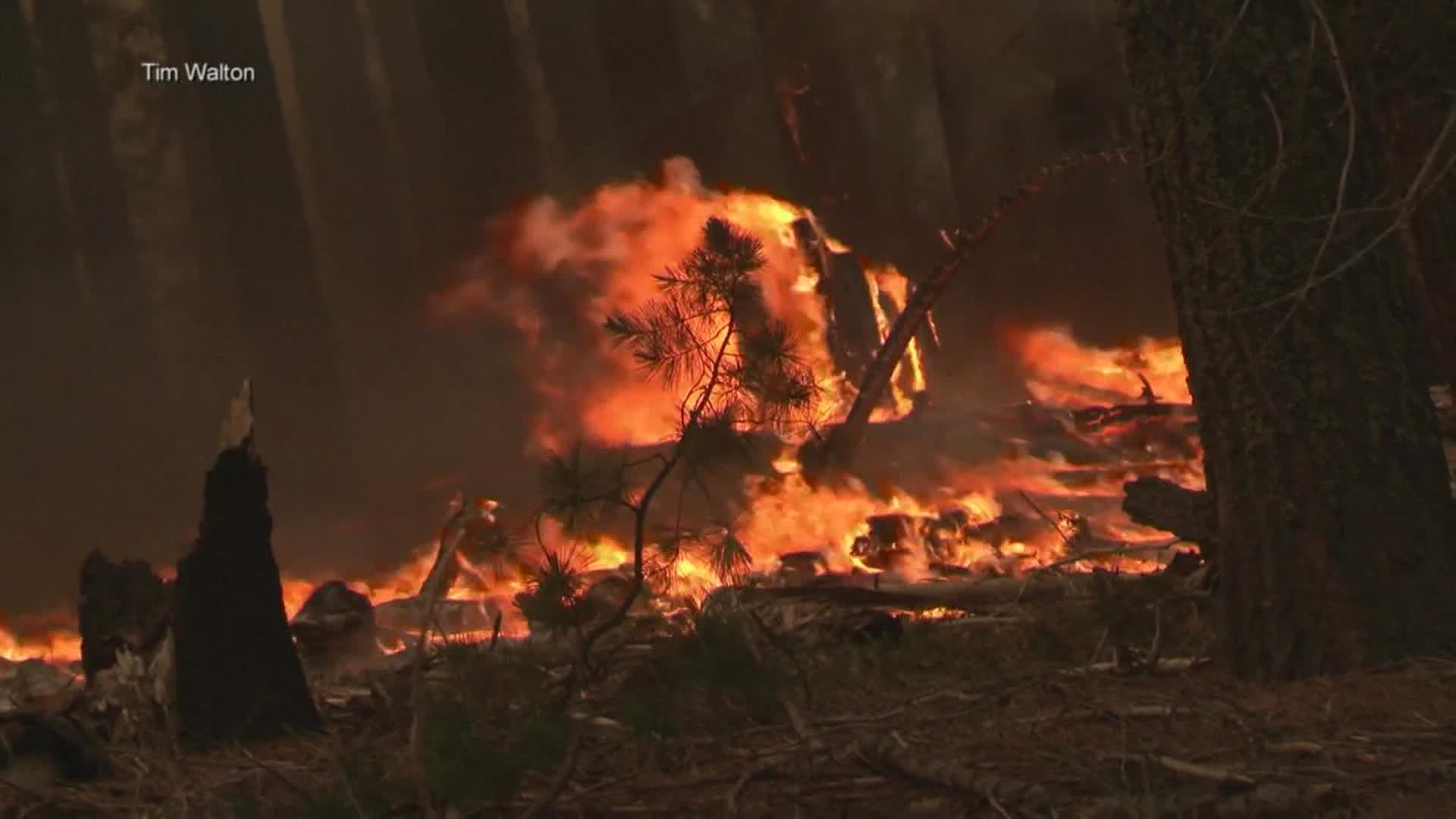MARIPOSA, Calif. — Yosemite National Park in California's Sierra Nevada mountains is currently facing serious, spreading wildfires.
The ongoing Washburn Fire has grown to over 2,000 acres, with more than 500 firefighters deployed to combat it. The fire is contained in the southern corner of the park, where some of the largest and oldest sequoia trees are located.
As of writing, the south entrance to the park is closed but the rest of the park entrances remain open.
In order to protect the sequoias, a sprinkler has been installed in the forest. The sprinklers dampen the ground around the trees and keep the fires at bay. They have not wrapped the sequoias in foil yet, a tactic that has been used in the past to protect the trees from the flames. The iconic Galen Clark Cabin has been wrapped in protective foil.
The fire is so intense that it is creating its own weather system; causing updrafts strong enough to launch debris into the air.
Sequoias are known to be fire-resistant due to how thick their bark is, but this starting to prove untrue. They have started to succumb to wildfires in increasing numbers due to a buildup of undergrowth from a century of fire suppression, drought, and an increase in fire intensity; the latter two being made worse by climate change.
Over the past couple of years, about one-fifth of the 75,000 large sequoias have been lost due to wildfires.
How Wildfires are affected by climate change
In California, fire season typically lasts from late June through the fall. As the planet warms, we can expect wildfire season to become a year-round event. The average fire season is already three-and-a-half times longer than it was decades ago. The number of annual large fires has tripled and they burn twice as many acres over time.
Severe heat and drought fuel wildfires, and both conditions are affected by the warming of the planet. We can continue to expect warmer temperatures and more droughts. which means that there are more chances for wildfires to start and they can last longer. The hot weather that the area experienced this past weekend hurt also firefighters trying to contain the fire, which started on Thursday.
Warmer temperatures evaporate moisture from the soil. This dry soil makes vegetation more susceptible to being burned. When paired with a drought, the soil is even drier, so the chance of a fire starting increases even further. These fires can start from human activity like campfires, or naturally when lightning strikes the dry ground.
Snowpacks are also melting about a month earlier, leaving the ground drier for longer periods of time. This contributes to a longer fire season.
Finally, meteorological patterns are being affected by climate change. Rain can be shifted to another area, moving away from the wildfire-prone region.

